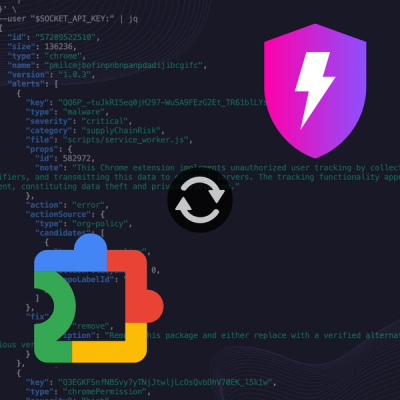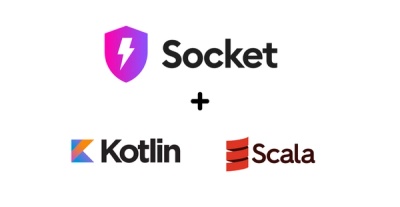
Product
Socket Now Protects the Chrome Extension Ecosystem
Socket is launching experimental protection for Chrome extensions, scanning for malware and risky permissions to prevent silent supply chain attacks.

Draggable multiple range sliders

Elessar is available via npm and Bower, and as standalone files:
npm install elessar | bower install elessar |
|---|
Elessar requires jQuery. If you're using npm or Bower, it's installed as part of this step. If not: a) why not? they're pretty sweet, b) download it, and I assume you're just using <script> tags, so just add a <script> tag.
Elessar exports as a CommonJS (Node) module, an AMD module, or a browser global:
var RangeBar = require('elessar');
require(['elessar'], function(RangeBar) { ... });
<script src="path/to/elessar.js"></script>
Create a rangebar with var rangeBar = new RangeBar then add rangeBar.$el to the DOM somewhere.
new RangeBar({
values: [], // array of value pairs; each pair is the min and max of the range it creates
readonly: false, // whether this bar is read-only
min: 0, // value at start of bar
max: 100, // value at end of bar
valueFormat: function(a) {return a;}, // formats a value on the bar for output
valueParse: function(a) {return a;}, // parses an output value for the bar
snap: 0, // clamps range ends to multiples of this value (in bar units)
minSize: 0, // smallest allowed range (in bar units)
maxRanges: Infinity, // maximum number of ranges allowed on the bar
bgMarks: {
count: 0, // number of value labels to write in the background of the bar
interval: Infinity, // provide instead of count to specify the space between labels
label: id // string or function to write as the text of a label. functions are called with normalised values.
},
indicator: null, // pass a function(RangeBar, Indicator, Function?) Value to calculate where to put a current indicator, calling the function whenever you want the position to be recalculated
allowDelete: false, // set to true to enable double-middle-click-to-delete
deleteTimeout: 5000, // maximum time in ms between middle clicks
vertical: false, // if true the rangebar is aligned vertically, and given the class elessar-vertical
bounds: null, // a function that provides an upper or lower bound when a range is being dragged. call with the range that is being moved, should return an object with an upper or lower key
htmlLabel: false, // if true, range labels are written as html
allowSwap: true // swap ranges when dragging past
});
.val()Returns array of pairs of min and max values of each range.
bar.val(); //=> [[0,20], [34,86]]
.val(values)Updates the ranges in the bar with the values. Returns the bar, for chaining.
bar.val([[0,30], [40,68]]); //=> bar: RangeBar
.on('changing' function(values, range))Event that triggers constantly as the value changes. Useful for reactively triggering things in your UI. Callback is passed the current values of the ranges and the range element that is changing.
.on('change' function(values, range))Event that triggers after the user has finished changing a range. Useful for updating a Backbone model. Callback is passed the current values of the ranges and the range element that has changed.
FAQs
Draggable multiple range sliders
The npm package elessar receives a total of 36 weekly downloads. As such, elessar popularity was classified as not popular.
We found that elessar demonstrated a not healthy version release cadence and project activity because the last version was released a year ago. It has 1 open source maintainer collaborating on the project.
Did you know?

Socket for GitHub automatically highlights issues in each pull request and monitors the health of all your open source dependencies. Discover the contents of your packages and block harmful activity before you install or update your dependencies.

Product
Socket is launching experimental protection for Chrome extensions, scanning for malware and risky permissions to prevent silent supply chain attacks.

Product
Add secure dependency scanning to Claude Desktop with Socket MCP, a one-click extension that keeps your coding conversations safe from malicious packages.

Product
Socket now supports Scala and Kotlin, bringing AI-powered threat detection to JVM projects with easy manifest generation and fast, accurate scans.